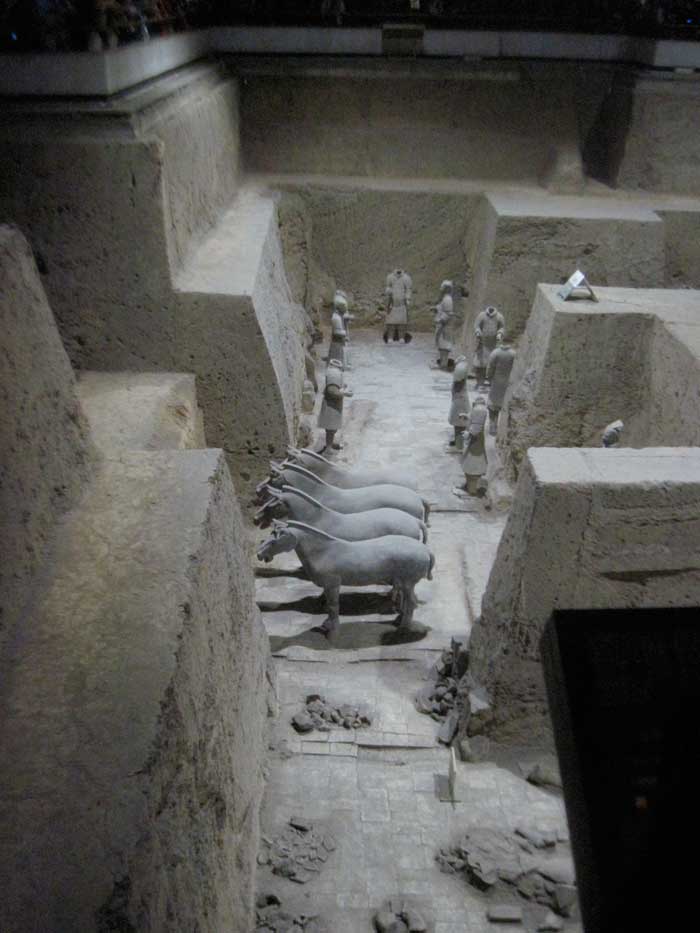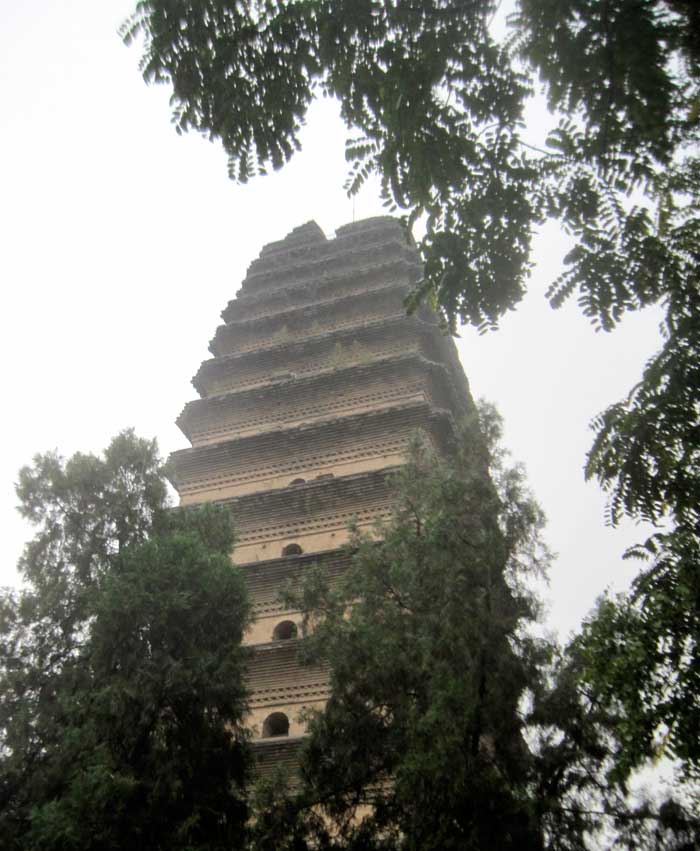Xi’an
The night we arrived, we strolled through the Night Market. It was a little dark and could be scary, but mainly fun and interesting with all the hub-bub of people and variety of shops and restaurants. The place comes alive at night. Here are some folks eating at one of the many places to eat.

Friday October 21
The first highlight of this day was the Terracotta Warriors Museum, with over 6,000 life-size warriors, each with his individual face, along with horses and chariots.
The emperor, Qin Shi Huang (269-210 BC), First Emperor of the Qin Dynasty, was enthroned at the age of 13. Construction of his mausoleum began then, and was completed 38 years later, and eventually involved over 700,000 workers. This emperor is known for unifying China in 221 BC, and for connecting the various sections of the Great Wall.
The mausoleum includes an inner and an outer wall, with a number of attendant burial pits. Pit No. 1 is the largest with over 6,000 figures arranged in military fashion. Pit No. 2 is smaller and contains over 1,400 chariots and cavalrymen.
The terracotta army was not mass-produced from molds. Each figure was individually modeled. Heads, arms, and bodies were modeled separately and then joined with strips of clay. The bodies are hollow and made up of coiled earth and attached to solid legs. A rough model was made first, then a fine clay slip was added, and details such as eyes, mouth, nose and details of dress were carved into the clay while it was still pliable. The whole figure was fired in a pottery oven later.
No two faces of the Qin warriors are alike, and anatomical details such as eyes and mouth are surprisingly lifelike.
The warriors and horses were originally painted with bright colors.
The figures were discovered in 1974 by local farmers digging a water well. Protective structures were constructed over the pits to protect them from the weather and robbers. Archaeologists are still making discoveries in the near countryside, using advanced techniques.



It was very crowded, and very commercialized. Here we are with some replicas at the museum store.

Next on the tour was a visit to a lacquer ware factory (no pictures). They told us how they made the items, and, of course, took us to the showroom.
We visited the Shao Ping Dian Primary School, which is supported in part by the Grand Circle Foundation. The young man (12 years old) in the picture gave us a picture he had drawn. Part of the visit included two of us to have an English “conversation” with the students. Here are Molly Sechrest and John at the front of the class reading our scripts. It was fun. Molly is as much of a ham as John.



Saturday October 22
We visited the Small Wild Goose Pagoda, one of the oldest pagodas in China. It was raining that morning.

Then we had a calligraphy lesson. Here is Suzanne holding her paper. It says “happiness”.

We visited the city wall, built in the 14th century. There were 72 steps to the top. (Of course John counted the steps!) The wall was quite thick.





Then we flew to Guilin and stayed at the Guilin Bravo Hotel.
To continue our trip, go to the Guilin page.
